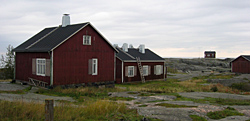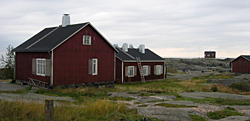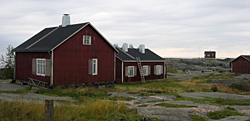Reconciling Söderskär Tourism, Nature and Culture

Metsähallitus Natural Heritage Services, Southern Finland launched year 2009 a project to develop the preconditions for nature and culture tourism in the Porvoo outer archipelago. The project aimed at reconciling tourism with the area’s natural and cultural heritage values in a time of transition, with Metsähallitus taking on the responsibility for the area. The project began 2009. In 2012 it was followed by a new project which will continue till the end of 2013.
Important area of sea birds and maritime history
The Söderskär Protected Area is part of the Söderskär and Långören archipelago (FI0100077) Natura 2000 area in the Baltic Sea. Söderskär Island, together with its water area, was established as a protected area by the County Administrative Board’s decree back in 1930. The protected area comprises 47 hectares of land and 2,074 hectares of water. The Söderskär archipelago is an important area for the protection and research of sea birds, and there are some restrictions on exploring the area and landing there in order to minimise disturbance to the nesting birds. The project will ensure the continuation of the birdlife research started by the Finnish Game and Fisheries Research Institute in 1965.
 The cultural heritage values are based on the area’s diverse history: Söderskär Island is part of the Finnish maritime history, it has served as a wartime fortress, and it has been part of the air surveillance chain that surrounded Helsinki. You can also find historical relics, maritime archaeological sites and precious traditional landscape in the vicinity of Söderskär Island, which is one of the best preserved historical lighthouse islands in the Gulf of Finland and part of a nationally significant built cultural environment (the National Board of Antiquities inventory: the pilot, lighthouse and fishing communities in the Porvoo western archipelago).
The cultural heritage values are based on the area’s diverse history: Söderskär Island is part of the Finnish maritime history, it has served as a wartime fortress, and it has been part of the air surveillance chain that surrounded Helsinki. You can also find historical relics, maritime archaeological sites and precious traditional landscape in the vicinity of Söderskär Island, which is one of the best preserved historical lighthouse islands in the Gulf of Finland and part of a nationally significant built cultural environment (the National Board of Antiquities inventory: the pilot, lighthouse and fishing communities in the Porvoo western archipelago).
Restoring wooden buildings and developing sustainable nature tourism
One of the key objectives of the project is to restore the precious wooden buildings on the Söderskär lighthouse islands. The lighthouse and the oldest wooden buildings date from 1862, making 2012 the year to celebrate Söderskär’s 150th anniversary. The Söderskär lighthouse is protected by the Act on the Protection of Buildings (decision in 2010)
Tourism in the area is clearly on the increase so it is necessary to improve the service structures, and information and signposting, for visitors to the area as well as to highlight the area’s diverse nature and history through information boards. These information boards and the instructions on exploring the area are based on the management and utilisation plan soon to be completed for the Söderskär and Långören archipelago.
The Söderskär lighthouse is privately owned and used for tourism purposes. It is especially challenging to develop tourism in the area when you want to protect the natural environment and the cultural heritage but also hope to create favourable conditions for profitable tourism business.
Metsähallitus Natural Heritage Services is responsible for the planning and implementation of the project, and the partners include the City of Porvoo, local tourism organisations and entrepreneurs operating in the area.
The development project is being supported by the European Regional Development Fund (ERDF) and will implement the objectives of the priority axis 3 included in the ERDF programme for Southern Finland, aimed at improving regional accessibility and operational environments.
The overall budget for the project in 2009–2012 was EUR 209,000, of which EUR 146,000 came from the ERDF programme for Southern Finland and the Uusimaa Centre for Economic Development, Transport and the Environment. The rest of the funding will be provided by Metsähallitus, City of Porvoo and private individuals in the form of voluntary work. The funding for the years 2012–2013 will be EUR 434 285, of which EUR 304 000 respectively from the ERDF programme for Southern Finland and the Uusimaa Centre for Economic Development, Transport and the Environment.
 |
 |
 |
 |
Last updated 28 April 2020
